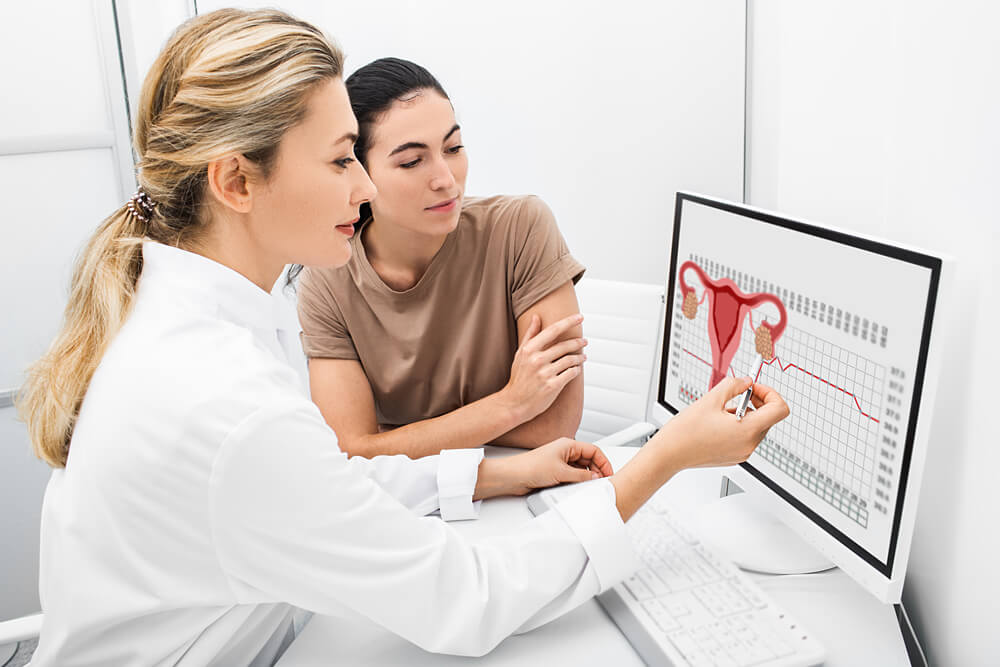Ovulation is a crucial process in a woman’s reproductive cycle that plays a significant role in fertility. Understanding ovulation is essential for women trying to conceive or wanting to learn more about their reproductive health. In this article, we will delve into the concept of ovulation, its importance, and how it affects a woman’s chances of becoming pregnant.
Ovulation is the release of a mature egg from the ovary, making it available for fertilization. This process occurs once every menstrual cycle in women of reproductive age. It marks the most fertile phase, where the chances of conception are highest. By understanding when ovulation happens and recognizing its signs, women can optimize their chances of achieving pregnancy.
Throughout this article, we will explore the intricacies of ovulation, including the timing, signs, and methods for tracking it. We will also discuss the duration of ovulation and highlight additional tools and techniques that can aid in identifying this critical phase in a woman’s menstrual cycle.
Whether you are actively trying to conceive or simply seeking to expand your knowledge about your reproductive health, understanding ovulation is a fundamental step. By gaining insight into this natural process, you can empower yourself with valuable information to make informed decisions and take proactive steps toward achieving your reproductive goals.
Now, let’s delve into the details of ovulation and unravel the fascinating world of female fertility.
Ready to take control of your fertility journey? Schedule a consultation with the experts at University Park OBGYN, part of the esteemed ToplineMD group. Our experienced team will provide personalized guidance and support, helping you navigate ovulation and optimize your chances of conceiving.
Understanding Ovulation

Ovulation is a remarkable process that lies at the heart of a woman’s fertility. To grasp its significance, let’s delve deeper into the definition and explanation of ovulation and shed light on the question: When does ovulation happen?
Ovulation is the pivotal event in a woman’s menstrual cycle, characterized by the release of a mature egg from the ovary. This egg, or ovum, is then ready to embark on its journey down the fallopian tube, where it can potentially be fertilized by sperm. Ovulation typically occurs once in each menstrual cycle, and its timing is essential for those planning to conceive.
The timing of ovulation varies among women, but it generally takes place around the midpoint of the menstrual cycle. In a standard 28-day cycle, ovulation tends to occur around day 14. However, it’s important to note that menstrual cycle lengths can vary, and ovulation timing may differ accordingly. Factors such as stress, hormonal imbalances, and certain medical conditions can also influence the timing of ovulation.
Understanding when ovulation happens is crucial because it signifies a woman’s most fertile period. In other words, it’s the prime time for conception to occur. During ovulation, the mature egg is released and remains viable for fertilization for about 12 to 24 hours. This relatively short fertility window emphasizes the importance of identifying and tracking ovulation to optimize the chances of successful conception.
To answer the question “When does ovulation happen,” you can observe and track various signs and symptoms. These indicators can provide valuable insights into your body’s ovulation patterns. Some common methods for detecting ovulation include monitoring changes in basal body temperature, observing changes in cervical mucus consistency and appearance, and paying attention to mild pelvic pain or twinges, known as mittelschmerz.
By understanding the process of ovulation and its timing in your menstrual cycle, you can empower yourself with knowledge about your fertility window. This knowledge allows you to plan intercourse strategically, increasing the likelihood of sperm meeting the released egg and successful fertilization.
Signs of Ovulation
Recognizing the signs of ovulation is instrumental in identifying your fertile window and maximizing your chances of conception. While ovulation itself may not always be readily apparent, several signs and symptoms can indicate when this pivotal event is taking place. Let’s explore these signs in detail.
Changes in Basal Body Temperature
One of the most reliable ovulation symptoms is a subtle increase in basal body temperature (BBT). Before ovulation, a woman’s BBT is typically lower, but as ovulation approaches, it experiences a slight rise of about 0.5 to 1 degree Fahrenheit. This increase in temperature occurs due to hormonal changes triggered by ovulation. To track your BBT accurately, use a specialized basal body temperature thermometer and record your daily readings consistently.
Changes in Cervical Mucus
Monitoring changes in cervical mucus consistency and appearance can provide valuable insights into ovulation. As you approach ovulation, your cervical mucus undergoes noticeable changes. It becomes clearer, thinner, and more slippery, resembling the consistency of raw egg whites. This fertile cervical mucus facilitates sperm movement, creating a more hospitable environment for fertilization. By observing these changes, you can identify your most fertile days.
Mild Pelvic Pain or Twinges
Mild twinges and slight pelvic pain might also be experienced in some cases. Experts call the phenomenon mittelschmerz. This is caused by the stretching or rupture of the ovarian follicle as the egg is released. Mittelschmerz typically focuses on a particular side of the abdomen’s lower part, and the pain may last for a few minutes to a few hours. Not all women experience this sensation, but if you do, it can serve as an additional sign to pinpoint your ovulation timeframe.
Breast Tenderness
Breast sensitivity or tenderness are also among common ovulation symptoms for some women. As hormone levels fluctuate during the menstrual cycle, breast tissue can become more sensitive and tender around the time of ovulation. This symptom may vary in intensity and duration from person to person.
By paying attention to these signs, tracking changes in your BBT and cervical mucus, and noting any pelvic discomfort, you can increase your awareness of when ovulation is likely occurring. This knowledge empowers you to optimize your timing for intercourse and enhance your chances of conceiving.
How Long Does Ovulation Last

Understanding the duration of ovulation is essential when trying to conceive. While ovulation itself is a relatively short-lived event, its impact on fertility extends beyond those few hours. Let’s how long does ovulation last and its implications for successful conception.
Typically, ovulation lasts for about 12 to 24 hours. During this brief period, the mature egg is released from the ovary and is available for fertilization. For couples who are actively trying to conceive, timing intercourse around this window is crucial. Sperm can survive in the reproductive tract for up to five days, so having intercourse in the days leading up to ovulation can increase the chances of sperm meeting the egg at the optimal moment.
It’s important to note that while ovulation itself is short-lived, the fertile window extends beyond those 12 to 24 hours. The fertile window includes the days leading up to ovulation when the chances of conception are also high. This is because sperm can survive in the female reproductive system for several days, patiently awaiting the release of the egg. By having intercourse in the days leading up to ovulation, you increase the likelihood of sperm being present when the egg is released.
Determining the exact length of your ovulation and fertile window requires tracking and monitoring your menstrual cycles and observing signs of ovulation, such as changes in basal body temperature, cervical mucus, and pelvic discomfort. By understanding your specific ovulation patterns and the length of your fertile window, you can strategically plan intercourse during the most favorable days for conception.


